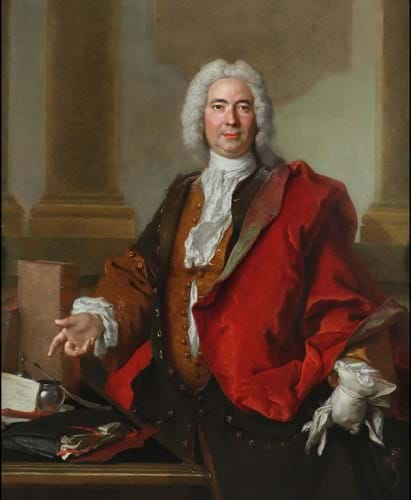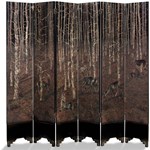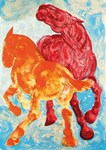
The culmination of the recent dispersal of items from Exbury House by Woolley & Wallis (25% buyer’s premium) was a group of 18 paintings offered at the latest fine art sale.
The country estate on the edge of the New Forest, acquired by Lionel de Rothschild in 1919, has yielded a bountiful crop of consignments to the Salisbury saleroom over the last six months.
Overall, 85 lots have now been offered over five different events, including a fine selection of furniture and works of art sold in August and led by a pair of Louis XVI vases that made £95,000 (see News, ATG No 2455).
At the Old Master, British and European paintings sale on September 8, another £268,000 was raised, lifting the combined total from Exbury House to £911,000.
The consignment itself came about after W&W former chairman Paul Viney, who remains a non-executive director of the company, oversaw negotiations over for the past three years. “For over 200 years the Rothschilds have been renowned as great collectors,” he said. “The provenance of the lots, many of which have been through several generations of the family, has clearly enhanced their interest.”
Company chairman John Axford said that the sales had “brought in a number of new serious buyers of fine works of art”, adding that the trustees of Exbury House had now made further consignments which will be announced in the coming months.
The Exbury House consignment boosted the overall hammer total for the picture sale to £568,000 with 85% of the 275 lots sold.
Perking up
W&W picture specialist specialist Victor Fauvelle noted that the market for traditional works has witnessed some lively activity since the lockdown earlier this year. “Old Masters have very definitely perked up,” he said. “This sale really builds on the March sale which was our most successful in this category to date.”
At the latest auction, 15 of the 18 Exbury House pictures sold with the main thrust provided by an eye-catching group of Old Master portraits. In particular a painting of the Elizabethan nobleman Thomas Arundell (c.1560-1639) brought strenuous competition, overshooting a £10,000-15,000 estimate and knocked down at £82,000 – an especially notable sum given that the work had been unsold against a £30,000-50,000 estimate at Sotheby’s in December 2009.
Here it sold to a London dealer who saw off strong underbidding from several private collectors.
Adventurous life
The 23¾ x 20in (60 x 51cm) oil on panel by George Gower (c.1540-96) was inscribed for 1580, the year when, aged 20, the young Arundell was imprisoned for his Roman Catholicism (he had refused to attend Protestant services). When released, he travelled abroad and entered the service of the Holy Roman Emperor, fighting a series of spirited battles against the Ottomans in Hungary.
Arundell led an adventurous life. He became known as ‘the Valiant’ and this portrait included the sitter’s coat of arms and the Latin inscription: Non spirar qui non aspirat (‘He who does not aspire does not breathe’).
Although he proved his loyalty to the queen by subscribing £100 towards the defeat of the Spanish Armada in 1588, on his return to England in 1595, having been shipwrecked off the coast of Suffolk, lost all his possessions and disinherited by his jealous father, he was thrown in prison again by Elizabeth I for having accepted a foreign title (he had been made a count by the Holy Roman Emperor). To add to his fame, or notoriety, he was later accused by Guy Fawkes of being part of the Gunpowder Plot.
Portraits by Gower, who became serjeant-painter to the queen a year, are extremely rare. His masterpiece, the ‘Armada’ portrait of Elizabeth herself, is now in the National Portrait Gallery and 16 other works either by him or attributed to him are in other British institutions.
Only around a dozen works have emerged in the last 50 years. The highest auction price before this sale was a portrait of a lady attributed to Gower that made £42,000 at Sotheby’s in December 2012 (source: Artprice by Artmarket).
So why did it receive such a positive reaction compared to when it was unsold just over a decade ago? A number of reasons seem plausible.
Firstly, it appears to have benefited from being offered as part of a well-publicised Rothschild collection, whereas it may have got somewhat overshadowed as part of a mixed-owner day-sale in London.
The W&W catalogue entry gave a full account of the provenance which probably bolstered interest. It had remained in the sitter’s family until it was sold at Christie’s in 1874, then was acquired by the publisher Henry George Bohn before entering the collection of Constance de Rothschild (1843-1931) – possibly via the family of her husband Cyril Flower, 1st Baron Battersea. It had then passed down through Exbury House owners Lionel and then Edmund de Rothschild (who died in 2009).
Perhaps also a local connection helped: the Salisbury saleroom is about 15 miles from Arundell’s baronial seat of Wardour Castle. Indeed, an apartment in New Wardour Castle, the nearby 18th century mansion built by the sitter’s descendants (presumably where this portrait was once kept), went on the market for £3.95m shortly before the W&W sale.
While the lower estimate here undoubtedly bumped up interest, issues relating to date and condition were, as ever, also key to the price. The auctioneers’ condition report was quite detailed, outlining the cradled panel, varnish and the three repaired vertical splits visible from the front among other factors. While some retouching and overpaint was evident under UV light, including to the dark and inscrutable torso, the face, crucially, was deemed well preserved and it was concluded that “overall condition appears consistent with age”.
All in all, bidders were keen to speculate what might emerge once the picture was restored – indeed, the price seems to reflect the growing interest in Old Masters that are deemed promising restoration projects.
Strong competition
This may also have been the case with two further portraits from the Exbury House collection that brought strong competition.
A portrait of a gentleman holding a compass which was attributed to Dutch artist Aelbert Cuyp (1620-91)was offered with a £5000-8000 estimate. This time the painting was in better condition despite some limited previous intervention, including a restored vertical spilt.
The oval oil on panel measuring 3ft 1 x 2ft 5in (95 x 76cm) had provenance to the banker Alexander Baring, who bought it at auction for £75 12s in 1815 as a self-portrait by Cuyp, before it was acquired a century later by Lionel de Rothschild. Although no longer believed to be a self-portrait, the attribution to Cuyp was confirmed by curator Dr Alan Chong before the current sale.
Works by the Dordrecht painter appear at auction fairly often, although portraits are much more unusual than his Italianate landscapes which can make substantial six- and even seven-figure sums. Nevertheless the attractive estimate, as well as the intriguing subject who it may be possible to identify with research, helped lift the lot and it was eventually knocked down to the London trade at £56,000.
Route master
The third portrait on the auction block was a portrait by Nicolas de Largillière (1656-1746) depicting Monsieur Aubert, the general director of bridges and roads of France. The oil on canvas laid on panel measured 4ft 5in x 3ft 5in (1.35 x 1.03m) and had an inscription identifying the sitter who was shown three-quarter-length standing next to his writing table.

Portrait of Monsieur Aubert, General Director of the Bridges and Roads of France, by Nicolas de Largillière – £38,000 at Woolley & Wallis.
Although it was in restored condition and had been unsold at Christie’s against a £30,000-50,000 estimate in July 2010 (it was purchased for Exbury House after that sale), the fact that it had now been securely dated to c.1725-30 and will be included in the artist’s forthcoming catalogue raisonné, as well as the more obtainable £12,000-18,000 estimate, can only have helped.
It was eventually knocked down at £38,000 to a private overseas buyer.
Elsewhere among the Exbury House pictures was a serene evening landscape by Dutch artist Aert van der Neer (c.1603-77). Again it drew international interest and sold to an overseas buyer at £25,000, this time against a £10,000-15,000 estimate.
The 2ft 6in x 3ft 3in (77cm x 1m) oil on canvas was signed with a monogram and had been given to the Edmund de Rothschild collection in 1962 by John Partridge of dealer Frank Partridge, according to the catalogue.
As the current sale also showed, a Rothschild is a client you want to keep.
















